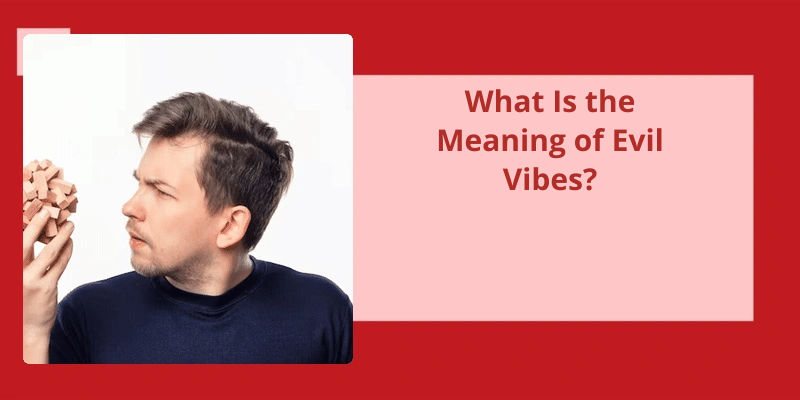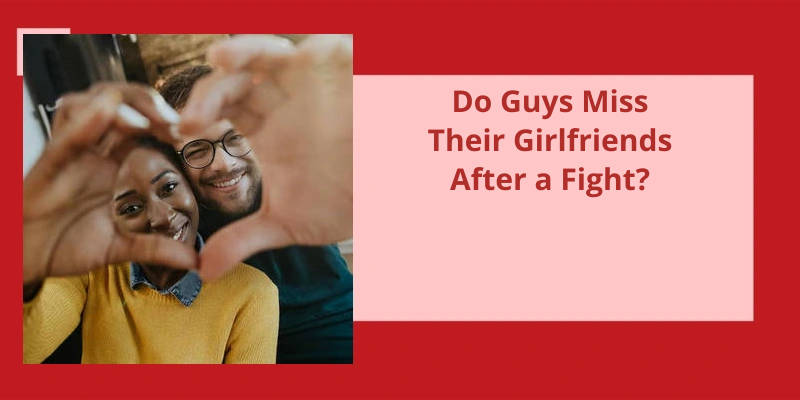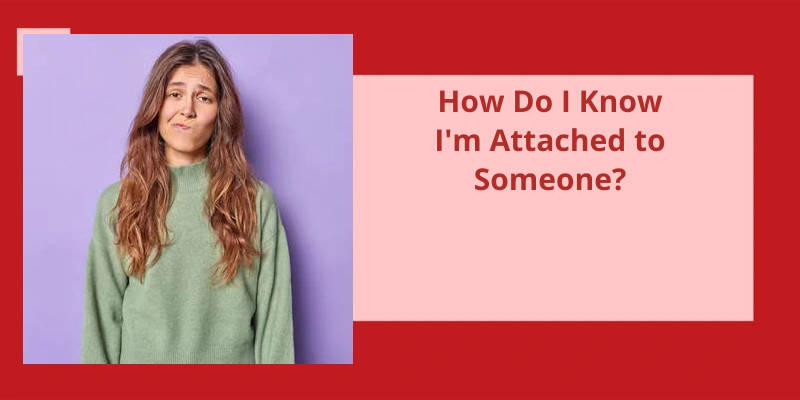It’s a fact of human nature that we’re all susceptible to picking up on certain vibrations or energies from other people and our surroundings, sometimes referred to as "vibes." While some vibes may be positive and uplifting, others can be quite the opposite, leaving us feeling uneasy, anxious, or even downright scared. This latter type of negative vibe is often referred to as "evil vibes," and is typically associated with individuals who exhibit traits such as maliciousness, spitefulness, and general malevolence. Those who emit this type of energy are often described as being "evil-minded," and their intentions can sometimes be difficult to decipher without careful observation and analysis. Understanding the concept of evil vibes is an important part of navigating interpersonal relationships and avoiding potentially dangerous situations.
What Is Good and Bad Vibes?
In general, good vibes are associated with positive energy, happiness, and warmth. They’re often confident, charismatic, and easy to be around. Conversely, bad vibes are associated with negative energy, sadness, and discomfort. People who give off bad vibes tend to make others feel unsettled or uneasy. They may be standoffish, rude, or simply carry a negative energy that’s difficult to be around.
For example, body language and vocal tone can play a significant role in how others perceive us. Smiling, making eye contact, and using a warm tone of voice can all make us seem more approachable and likable. Conversely, crossing our arms, avoiding eye contact, or speaking in a monotone voice can make us seem standoffish or unapproachable.
While there are some common factors that can contribute to one or the other, everyone’s experiences will be different. Whether we feel drawn to someone’s positive energy or repelled by their negative vibes, it’s important to trust our instincts and pay attention to how we feel in different situations. By doing so, we can cultivate more positive experiences and relationships in our lives.
How to Identify Good and Bad Vibes in Different Situations
To identify good or bad vibes in different situations, pay attention to your gut feeling or intuition. Look for signs of positivity such as a feeling of lightness, happiness or clarity. Negative vibes may come in the form of a sense of uneasiness or discomfort or feelings of tension and stress. Observe body language, tone of voice and facial expressions as they can also be indicators of good and bad vibrations. Trust your instincts and use your intuition to help you identify good and bad vibes in various situations.
It’s difficult to describe the feeling of bad vibes, but we all know it when we feel it. It’s that uneasy and uncomfortable feeling that can make us want to escape a situation or person. While some may use words like negative energy or bad aura to describe it, there are actually many synonyms and related words that can help articulate this feeling. Let’s explore some of these words and their meanings.
What Is a Word for Bad Vibes?
Have you ever found yourself in a situation where you just sense something negative? Perhaps it’s the energy in the room, or the nonverbal cues you pick up from someone. Whatever it is, you know it’s there and it’s not good. These negative feelings are often described as “bad vibes.”
To describe bad vibes, there are many words that can be used. The word “acrimony” comes to mind, which refers to bitterness or ill-feeling towards someone. “Animosity” is another term, meaning hostility or a strong dislike for someone.
When we sense bad vibes, it’s important to pay attention to them. They may be warning us of potential danger or negative situations. It’s always better to trust our instincts and take precautions rather than ignore these feelings.
It’s important to pay attention to these negative feelings and trust our instincts to protect ourselves from potentially dangerous situations.
The Science Behind Bad Vibes: Exploring the Psychology and Physiology of How Our Bodies and Minds React to Negative Energy.
- The human body is an electrochemical system that responds to external stimuli, including negative energy.
- Negative energy can trigger the release of stress hormones, such as cortisol, which can have a range of physiological effects on the body.
- Studies have shown that exposure to negative energy can increase feelings of anxiety, fear, and sadness in some individuals.
- While the exact mechanisms behind the effects of negative energy on the body and mind are still being researched, it’s clear that our emotions and experiences can have a profound impact on our overall wellbeing.
- Practices like meditation, mindfulness, and therapy can help individuals learn how to manage and mitigate the effects of negative energy on their mental and physical health.
Source: 222 Synonyms & Antonyms for BAD VIBES – Thesaurus.com
Now that we’ve a basic understanding of what it means for someone to have vibes, it’s important to explore the different ways vibes can impact our life. From personal relationships to professional encounters, vibes can play a significant role in how we interact with others and navigate the world around us. So, let’s dive in and explore the power of vibes!
What Does It Mean for Someone to Have Vibes?
Having vibes isn’t a tangible concept that can be explained through scientific principles, but rather it’s something that’s experienced in the form of a feeling. It refers to the energy that surrounds us and is emitted by people, objects and even places. When we’re around people who’ve good vibes, we tend to feel lighter, uplifted, and more at ease. On the other hand, negative vibes can make us feel drained, uneasy and even anxious.
It’s believed that the vibes we carry with us are a product of our thoughts, emotions and the way we’ve lived our lives. People who’re generally happy, positive, and live their lives with purpose, are perceived to have good vibes. Similarly, people who’ve gone through trauma or are going through difficult times may carry negative vibes that affect the people around them.
The concept of vibes has become increasingly popular, especially in recent times, with people being more aware of the energy they carry with them and how it affects their lives. It’s become a common subject discussed in pop culture and is often used as a form of validation for intuitive feelings about people and situations.
Having good vibes isn’t just important for our individual well-being but also for the people around us. It’s said that our vibes can be contagious and can affect the people we’re interacting with, especially in social situations. This is why it’s important to be self-aware and mindful of the energy we’re emitting, particularly in social situations.
We all carry certain energies that can affect ourselves and others.
How Can We Improve Our Vibes and Emit Positive Energy?
- Focus on positive thoughts and affirmations
- Practice daily gratitude
- Surround yourself with positive and supportive people
- Spend time in nature
- Meditate or practice mindfulness
- Take care of your physical health through exercise and nourishing food
- Avoid negative self-talk and negative media
- Engage in activities that bring you joy and fulfillment
- Be kind to yourself and others
As language evolves, so do our definitions of words. One word that’s undergone a shifting definition is “vibe.” Originally a shortened version of “vibraphone,” it later took on a more abstract meaning in the slang of the 1960s. This article will explore the history and modern usage of the word “vibe.”
What Is the Old Definition of Vibe?
The term “vibe” has been around for over 80 years, with it’s origins tracing back to the vibraphone, a musical instrument known for producing a unique and pleasant sound. In it’s early days, “vibe” was largely confined to the world of music, where it was used as a slang term to describe the distinct mood or atmosphere created by a particular type of music.
Over time, however, the term took on a broader meaning, entering the lexicon of everyday language and becoming a shorthand way of referring to the overall feeling or “vibration” of a particular situation or environment. This expanded understanding of the word owes much to the counterculture movements of the 1960s and 70s, when terms like “vibes” and “vibing” were used to describe the unspoken, instinctual connections that people felt with each other and with the world around them.
It’s also frequently used in marketing and advertising, where companies seek to tap into the positive associations that people have with certain “vibes” in order to sell products or promote their brand.
This, in turn, has led to a certain degree of skepticism among some people, who see the term as little more than a vague and meaningless buzzword.
Regardless of how one feels about it, however, there can be no denying that the term “vibe” has had a profound impact on our cultural consciousness, helping to shape the way we think about the world around us and the connections we share with one another.
The Evolution of the Definition of “Vibe” and It’s Use in Modern Times
- The term “vibe” originally referred to a feeling or atmosphere in a physical space.
- In the 1960s, it became associated with a particular style of music and culture, particularly within the hippie movement.
- In the 1990s and 2000s, “vibe” became more commonly used to describe a general positive energy or mood.
- Today, “vibe” is often used in social media and online communication to express a certain aesthetic or mood, such as “good vibes only.”
- Some critics argue that the overuse and commodification of the term has diminished it’s original meaning and significance.
While positivity and optimism are important aspects of our lives, the mantra “bad vibes only” has gained popularity as a way to curate our social circle and energy. However, this mindset can sometimes lead to a negative and closed-off outlook, as we reject any potential challenges or growth opportunities. Let’s delve deeper into what “bad vibes only” means and it’s potential drawbacks.
What Does Bad Vibes Only Mean?
Bad Vibes Only has become a popular phrase in recent years, often used as a way to express a desire to distance oneself from negativity and toxic energy. It’s a catchphrase many people use to convey that they only want to surround themselves with positive people and experiences. The concept of Bad Vibes Only has become somewhat of a social media trend, with hashtags and slogans popping up on various platforms.
On the other hand, the phrase Bad Vibes Only can also be misused or taken too far. It’s important to remember that not everything in life is positive and ignoring negative experiences or emotions can actually be detrimental to your mental health. It’s okay to acknowledge and process negative feelings, as they can often lead to important personal insights and growth.
It’s a reminder that we’re all responsible for our own happiness and that sometimes that means letting go of things or people that no longer serve us.
Examples of How to Identify and Deal With Toxic Energy or Negative People.
Here are some practical ways to recognize and handle toxic energy or negative individuals in your life.
Conclusion
These vibes are often characterized by a sense of unease, discomfort and sometimes fear when experienced by others. While it’s difficult to fully understand why some individuals are evil-minded, it’s important for us to recognize and acknowledge the existence of these vibes, and take steps to protect ourselves from them. Ultimately, by cultivating our own positive energy and avoiding those who emit negative vibes, we can create a safer and more harmonious environment for ourselves and those around us.






